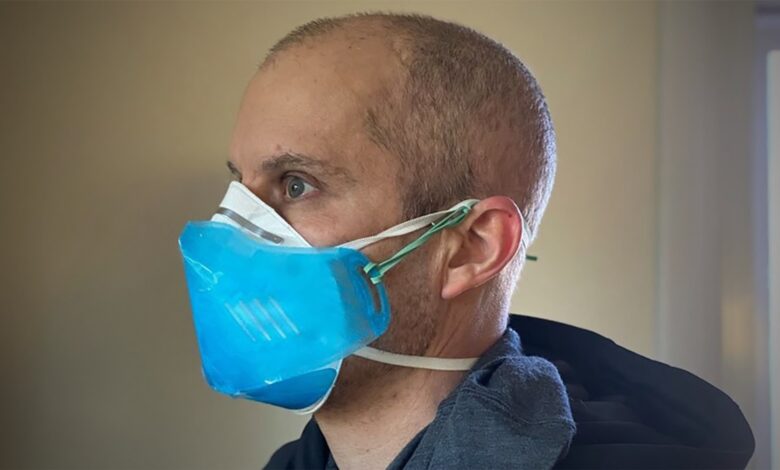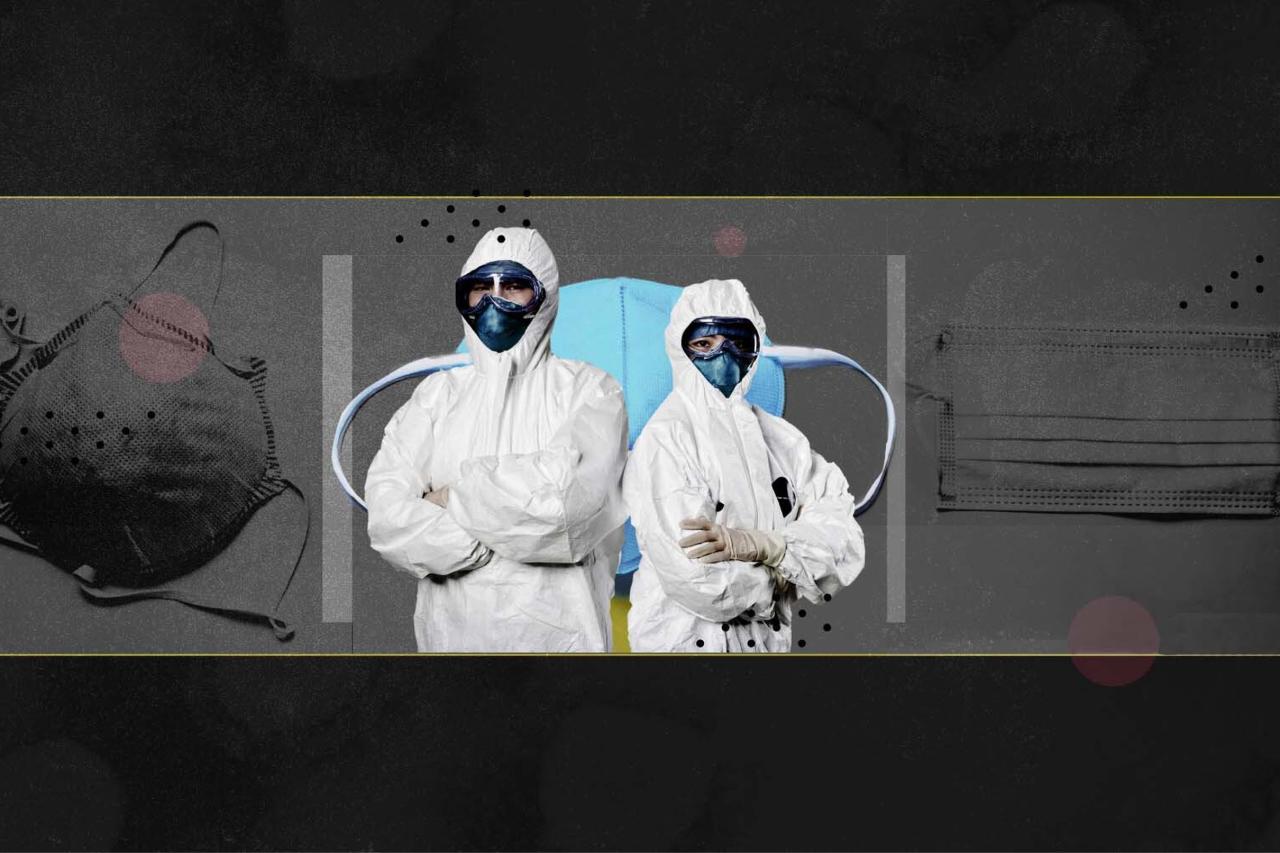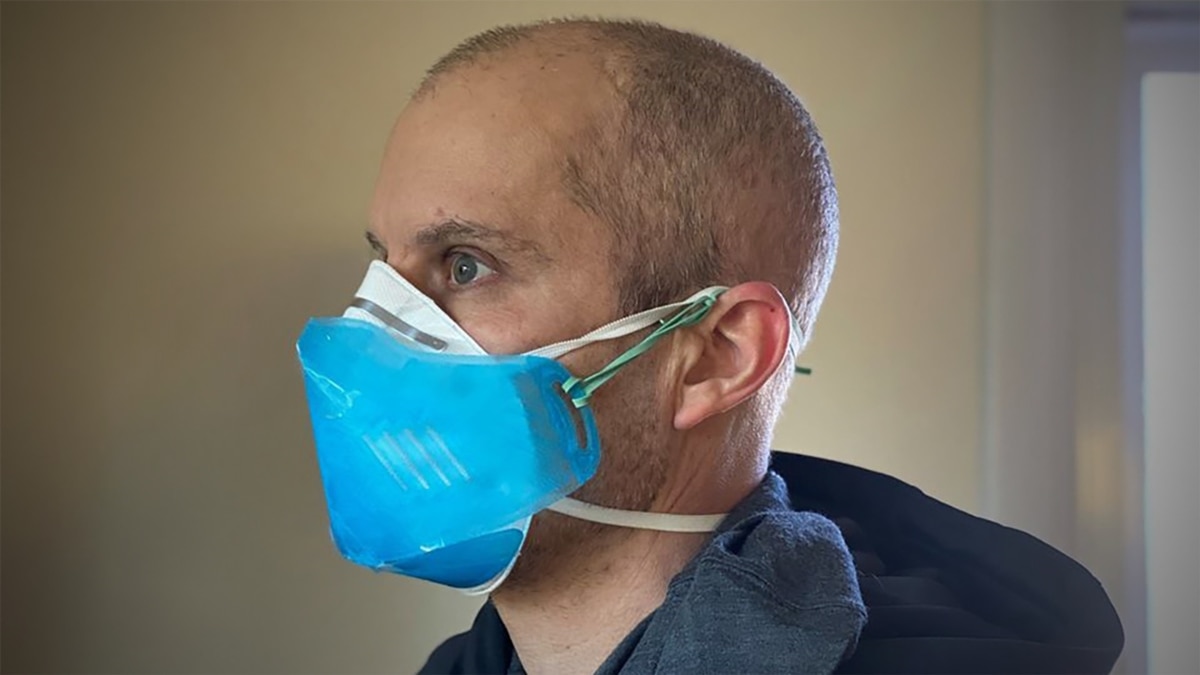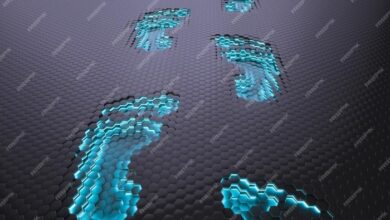
Can We 3D Print a Better Face Mask?
Can we 3D print a better face mask? The answer, surprisingly, is a resounding yes. 3D printing technology has revolutionized the way we think about face masks, offering advantages that traditional masks simply can’t match. Imagine a mask that’s not only effective at filtering out harmful particles but also custom-fitted to your face, ensuring a perfect seal and maximum comfort.
This is the promise of 3D printed face masks, and the potential is truly exciting.
From healthcare settings to everyday life, 3D printed masks are poised to transform the way we protect ourselves. With the ability to create masks with intricate designs and innovative materials, 3D printing opens up a world of possibilities for enhancing protection and comfort.
This blog post will delve into the exciting world of 3D printed face masks, exploring their benefits, design considerations, and the future of this groundbreaking technology.
The Potential of 3D Printed Face Masks
The emergence of 3D printing technology has opened up new possibilities in the field of healthcare, particularly in the realm of personal protective equipment (PPE). One area where 3D printing has shown significant promise is in the production of face masks.
3D printed face masks offer several advantages over traditional masks, making them a compelling alternative for various applications.
Advantages of 3D Printed Face Masks
D printed face masks offer several advantages over their traditional counterparts, making them a viable alternative for various applications.
- Customization and Personalized Fit:3D printing allows for the creation of masks tailored to the individual’s facial features, ensuring a snug and comfortable fit. This personalized fit enhances the mask’s effectiveness by minimizing gaps and improving the seal around the nose and mouth, preventing air leakage.
- Material Versatility:3D printing technology enables the use of a wide range of materials for mask production, including biocompatible polymers, thermoplastic elastomers, and even medical-grade materials. This versatility allows for the creation of masks with specific properties, such as breathability, filtration efficiency, and durability.
- On-Demand Production:3D printing allows for the rapid production of masks on-demand, eliminating the need for large-scale manufacturing facilities and minimizing supply chain disruptions. This is particularly beneficial in emergency situations or during outbreaks, where the demand for PPE can surge rapidly.
It’s fascinating to think about how 3D printing could revolutionize face mask design, creating masks that are not only more comfortable but also offer superior protection. Meanwhile, the upcoming hearings with former GOP lawmakers are sure to be captivating, with the potential to paint a stark picture of Trump’s isolation and responsibility in the events of January 6th, as reported in this article, former gop lawmaker hearings will paint a picture of trump as abandoned isolated and near solely responsible.
While the political landscape shifts, it’s important to remember that innovations like 3D printing have the power to shape our future in ways we can only begin to imagine.
- Reduced Costs:While the initial investment in 3D printing equipment may be significant, the cost of producing masks using 3D printing can be lower than traditional manufacturing methods, especially for small batches or customized designs.
- Sustainable Manufacturing:3D printing can reduce waste and environmental impact compared to traditional manufacturing processes, as it allows for the production of masks only when needed and reduces the need for large quantities of raw materials and packaging.
Materials Used in 3D Printing Face Masks
The choice of materials for 3D printed face masks is crucial, as it directly impacts the mask’s performance, comfort, and safety.
- Polylactic Acid (PLA):PLA is a biodegradable and biocompatible thermoplastic commonly used in 3D printing. It is known for its strength, ease of printing, and relatively low cost. However, PLA’s moisture sensitivity can limit its use in applications requiring prolonged exposure to moisture.
- Acrylonitrile Butadiene Styrene (ABS):ABS is a strong and durable thermoplastic that offers good resistance to chemicals and impact. It is a popular choice for 3D printed masks due to its ability to withstand repeated use and cleaning. However, ABS is not biodegradable and can release harmful fumes during printing.
- Polyethylene Terephthalate Glycol (PETG):PETG is a transparent thermoplastic that offers good impact resistance, flexibility, and chemical resistance. It is often used for 3D printed face shields and mask frames due to its clarity and ability to withstand repeated sterilization.
- Polycarbonate (PC):PC is a strong, rigid, and transparent thermoplastic known for its high impact resistance and heat resistance. It is commonly used for 3D printed face shields and mask frames due to its durability and ability to withstand high temperatures.
Benefits of Customization and Personalized Fit
The ability to customize 3D printed face masks offers significant advantages in terms of comfort, effectiveness, and overall user experience.
- Improved Seal and Fit:3D printed masks can be designed to conform precisely to the user’s facial contours, minimizing gaps and ensuring a tight seal around the nose and mouth. This improved fit reduces air leakage and enhances the mask’s effectiveness in filtering airborne particles.
- Enhanced Comfort:A personalized fit reduces pressure points and discomfort associated with traditional masks, leading to a more comfortable wearing experience. This is particularly important for individuals who wear masks for extended periods, such as healthcare workers or those with sensitive skin.
- Increased Compliance:When masks are comfortable and fit well, users are more likely to wear them correctly and for longer durations, improving their overall effectiveness in protecting against airborne contaminants.
Design Considerations for Enhanced Protection
The effectiveness of a face mask hinges on its ability to filter out airborne particles and provide a secure fit. This section delves into the design elements that contribute to a more effective face mask, particularly focusing on the filter materials and airflow dynamics.
Filter Design and Effectiveness
The filter is the core component of any face mask, responsible for trapping airborne particles. Different filter materials and designs offer varying levels of protection.
- Meltblown Nonwovens:Widely used in disposable masks, meltblown nonwovens are made by extruding a polymer through fine holes, creating a web of fibers with a high surface area. These fibers effectively trap particles through a combination of mechanical filtration and electrostatic attraction.
- Electrospun Nanofibers:Electrospinning produces extremely fine fibers, often in the nanometer range. These fibers provide a highly dense filter media, capable of trapping even smaller particles, such as viruses and bacteria.
- Activated Carbon:Activated carbon filters are known for their ability to adsorb gases and odors. They can be incorporated into face mask filters to enhance protection against volatile organic compounds (VOCs) and other pollutants.
The effectiveness of a filter is measured by its filtration efficiency, which refers to the percentage of particles it can block. Filter efficiency is typically assessed using standard test methods, such as the ASTM F2100 standard.
Airflow and Breathability
While a tight seal and effective filtration are crucial, a face mask must also allow for comfortable and efficient breathing. Poor airflow can lead to discomfort, reduced oxygen intake, and even breathing resistance.
- Mask Shape and Fit:The shape and fit of the mask are key factors in airflow. A well-designed mask should conform to the contours of the face, minimizing gaps and leaks.
- Valve Design:Some masks incorporate valves that allow exhaled air to escape more easily, reducing the buildup of moisture and heat inside the mask.
- Material Permeability:The material used for the mask’s outer layer and inner lining should be breathable, allowing for easy passage of air.
D printing offers a unique advantage in optimizing airflow and breathability. The ability to create complex geometries allows for the design of masks with specific airflow channels and ventilation systems, minimizing breathing resistance and enhancing comfort.
3D Printing Technology for Face Masks: Can We 3d Print A Better Face Mask
D printing, also known as additive manufacturing, has emerged as a promising technology for producing face masks. This technology offers numerous advantages over traditional manufacturing methods, including the ability to create complex designs, personalize masks, and rapidly prototype new designs.
Different 3D Printing Techniques for Face Masks
Various 3D printing techniques can be employed for face mask production. These techniques vary in their printing mechanisms, materials, and resulting product properties.
- Fused Deposition Modeling (FDM):This is one of the most common 3D printing techniques. It involves extruding a thermoplastic filament, such as ABS or PLA, through a heated nozzle onto a build platform. The filament solidifies layer by layer, forming the desired object.
FDM is known for its affordability and ease of use, making it suitable for rapid prototyping and small-scale production of face masks.
- Stereolithography (SLA):This technique uses a vat of photopolymer resin that is cured layer by layer by a UV laser. SLA offers high resolution and detailed surface finishes, making it ideal for creating masks with intricate designs and tight tolerances. However, it requires specialized equipment and materials, making it more expensive than FDM.
I’ve been thinking a lot about how we can use 3D printing to create better face masks. Maybe we could print masks with customizable filters, or even ones that automatically adjust to fit different face shapes. It’s a fascinating idea, but it’s hard to focus on innovation when the world feels like it’s falling apart.
The article opinion will inflation worries push americans toward authoritarianism to economic detriment really hit home for me, and it makes me wonder if we’ll even have the resources to invest in things like better face masks if we’re constantly battling economic uncertainty and political instability.
I guess only time will tell, but I’m still hopeful that we can find a way to create a better future, even if it means starting with a better face mask.
- Selective Laser Sintering (SLS):SLS uses a laser to fuse powdered materials, such as nylon or polycarbonate, into a solid object. This technique produces strong and durable parts, making it suitable for creating masks that can withstand repeated use and washing. However, SLS requires specialized equipment and materials, making it more expensive than FDM.
- Digital Light Processing (DLP):DLP uses a projector to project a pattern of UV light onto a vat of photopolymer resin, curing the resin layer by layer. This technique offers high resolution and faster printing speeds than SLA. DLP is a suitable option for producing masks with intricate designs and complex geometries.
Advantages and Limitations of 3D Printing Techniques for Face Masks
Each 3D printing technique has its own set of advantages and limitations, which must be considered when choosing the best method for face mask production.
Advantages
- Customization:3D printing allows for the creation of customized masks that are tailored to the individual’s facial features. This can improve the fit and comfort of the mask, as well as enhance its effectiveness in filtering air.
- Rapid Prototyping:3D printing enables rapid prototyping of new mask designs, allowing for quick iterations and testing of different materials and features. This is crucial for developing new and improved masks to address emerging needs and challenges.
- On-Demand Production:3D printing allows for on-demand production of masks, reducing the need for large inventories and minimizing waste. This is particularly beneficial for situations where there is a sudden surge in demand for masks, such as during a pandemic.
- Decentralized Production:3D printing can be used for decentralized production of masks, allowing for local manufacturing and reducing reliance on centralized supply chains. This is important for ensuring access to essential medical supplies in remote or underserved areas.
Limitations
- Production Speed:While 3D printing offers rapid prototyping, it is generally slower than traditional manufacturing methods for large-scale production. This limitation can be addressed by using multiple 3D printers or by combining 3D printing with other manufacturing techniques.
- Material Properties:The materials used in 3D printing may not always have the same properties as materials used in traditional manufacturing. For example, 3D-printed masks may not be as durable or resistant to chemicals as masks made from injection-molded plastics.
- Cost:While the cost of 3D printing has been decreasing, it can still be more expensive than traditional manufacturing methods for large-scale production. However, the cost advantage of 3D printing is significant for small-scale production, customization, and rapid prototyping.
- Regulation:The use of 3D-printed masks in healthcare settings may be subject to regulatory approval, as they need to meet specific standards for safety and effectiveness.
Comparison of 3D Printing Technologies for Face Mask Production
| Technology | Advantages | Limitations | Suitability for Face Mask Production |
|---|---|---|---|
| Fused Deposition Modeling (FDM) | Affordable, easy to use, rapid prototyping | Lower resolution, limited material options, lower strength | Suitable for small-scale production, rapid prototyping, and basic mask designs |
| Stereolithography (SLA) | High resolution, detailed surface finish, wide range of materials | More expensive, requires specialized equipment, limited material options | Suitable for intricate mask designs, personalized masks, and high-quality finishes |
| Selective Laser Sintering (SLS) | Strong and durable parts, wide range of materials, good for complex designs | More expensive, requires specialized equipment, post-processing required | Suitable for masks that require high strength and durability, such as medical masks |
| Digital Light Processing (DLP) | High resolution, fast printing speeds, good for complex designs | More expensive, requires specialized equipment, limited material options | Suitable for intricate mask designs, personalized masks, and large-scale production |
Real-World Applications and Impact
The potential of 3D printed face masks extends beyond the initial response to the COVID-19 pandemic. Their adaptability, customization, and potential for on-demand production make them valuable tools in various healthcare settings and everyday life.
Impact on Healthcare
D printed face masks have the potential to revolutionize healthcare by addressing critical needs for personal protective equipment (PPE) and offering personalized solutions for patients.
- Addressing PPE Shortages:During emergencies like pandemics, 3D printing can rapidly produce face masks, mitigating supply chain disruptions and ensuring healthcare workers have adequate protection.
- Customizable Solutions for Patients:3D printing allows for the creation of masks tailored to individual facial structures and needs, such as patients with facial deformities or those requiring specific respiratory support.
- Improved Comfort and Fit:Customized 3D printed masks can provide a more comfortable and secure fit, improving adherence to mask-wearing protocols and reducing the risk of mask slippage.
Everyday Applications
Beyond healthcare, 3D printed face masks offer practical solutions for everyday life, catering to specific needs and preferences.
- Personalized Style and Design:3D printing allows for the creation of masks with unique designs, colors, and patterns, enabling individuals to express their personal style while maintaining protection.
- Enhanced Filtration and Protection:3D printed masks can incorporate specialized filters for specific environments, such as those with high levels of particulate matter or allergens.
I’m curious if we can 3D print a face mask that’s more comfortable and breathable. I’ve been wearing the same mask for months, and it’s starting to feel a little… worn. Maybe it’s time to experiment with some new designs! Speaking of needing a change, I recently read this great article on how to handle job sharing dilemmas – it’s a tough situation, but the advice was really helpful.
Anyway, back to the face mask – maybe a 3D printed version would be the perfect solution!
- Accessibility and Affordability:3D printing can make face masks more accessible and affordable, especially in remote areas or for individuals with limited resources.
Real-World Examples of 3D Printed Face Mask Usage, Can we 3d print a better face mask
| Application | Example | Impact |
|---|---|---|
| Healthcare | During the COVID-19 pandemic, hospitals and clinics used 3D printed masks to supplement their PPE supply, ensuring healthcare workers had adequate protection. | Reduced risk of infection for healthcare workers, maintained essential healthcare services. |
| Customizable Solutions | Hospitals are using 3D printing to create masks for patients with facial deformities, providing a comfortable and secure fit for respiratory support. | Improved patient comfort, adherence to treatment, and overall well-being. |
| Everyday Life | Individuals with allergies are using 3D printed masks with specialized filters to reduce exposure to allergens, improving their quality of life. | Enhanced protection and comfort for individuals with specific needs, reducing the impact of allergies on daily activities. |
Future Developments and Innovations

The field of 3D printed face masks is poised for significant advancements, driven by ongoing research and development in materials science, additive manufacturing, and sensor technology. These innovations promise to enhance the effectiveness, comfort, and functionality of 3D printed masks, paving the way for a future where personalized and intelligent respiratory protection is readily accessible.
Emerging Technologies and Materials
The exploration of new materials and manufacturing techniques holds immense potential for improving the performance and features of 3D printed face masks.
- Bio-based and Sustainable Materials:Research is actively exploring the use of bio-based polymers derived from renewable sources like corn starch, algae, or cellulose. These materials offer a sustainable alternative to traditional plastics, reducing environmental impact and promoting circular economy principles. For example, researchers at the University of California, Berkeley, have developed a 3D printable bioplastic from algae that exhibits excellent biodegradability and mechanical properties, making it suitable for mask production.
- Electrospun Nanofibers:Electrospinning is a technique that produces ultra-fine fibers with high surface area and porosity. These nanofibers can be incorporated into 3D printed masks to enhance filtration efficiency, trapping even smaller particles and improving protection against airborne pathogens. For instance, researchers at the University of Massachusetts Amherst have successfully integrated electrospun nanofibers into 3D printed masks, demonstrating significantly improved filtration performance compared to conventional masks.
- Shape Memory Polymers:Shape memory polymers have the unique ability to return to their original shape after being deformed. This property can be leveraged to create 3D printed masks that conform to the user’s face, ensuring a secure and comfortable fit. For example, researchers at the University of Michigan have developed a 3D printed mask made from shape memory polymers that can adjust to different facial shapes and sizes, improving seal and reducing leakage.
Timeline of Future Developments
Based on current research trends and technological advancements, a timeline outlining potential future developments in 3D printed face mask technology can be envisioned:
- Short Term (1-3 Years):Increased adoption of bio-based materials and electrospun nanofibers for enhanced filtration and sustainability. Development of customizable 3D printed masks with improved fit and comfort. Integration of basic sensors for monitoring mask usage and environmental conditions.
- Mid-Term (3-5 Years):Advancements in shape memory polymers and other smart materials for adaptive and self-adjusting masks. Integration of more sophisticated sensors for real-time monitoring of respiratory parameters and air quality. Development of personalized 3D printed masks based on individual facial geometry and health needs.
- Long Term (5+ Years):Integration of advanced functionalities like voice amplification and active air purification. Development of self-sterilizing masks using antimicrobial materials and UV light technology. Integration of artificial intelligence and machine learning algorithms for predictive health monitoring and personalized mask recommendations.
Integration of Sensors and Smart Features
The integration of sensors and smart features into 3D printed masks opens up exciting possibilities for enhanced functionality and personalized protection.
- Respiratory Monitoring:Sensors embedded within the mask can track breathing rate, depth, and volume, providing valuable insights into respiratory health and potential issues. This data can be used to alert users to breathing difficulties or monitor the effectiveness of mask usage.
- Air Quality Monitoring:Sensors can detect and measure pollutants like particulate matter, ozone, and carbon monoxide in the surrounding air. This information can be used to provide real-time feedback on air quality and alert users to potentially hazardous environments.
- Mask Usage Monitoring:Sensors can track mask fit, duration of wear, and frequency of removal. This data can help ensure proper mask usage and identify potential gaps in protection.
- Smart Notifications:3D printed masks can be equipped with smart features that provide alerts and notifications based on sensor data. For example, users can receive alerts if they are breathing too shallowly or if the air quality in their environment deteriorates.
Wrap-Up

The future of face masks is undoubtedly intertwined with 3D printing. As the technology continues to evolve, we can expect even more innovative designs and materials that will enhance protection, comfort, and functionality. From personalized fits to integrated sensors, the possibilities are endless.
So, the next time you reach for a face mask, consider the potential of 3D printing to revolutionize this essential piece of personal protective equipment. It’s a technology that could change the way we think about masks forever.






